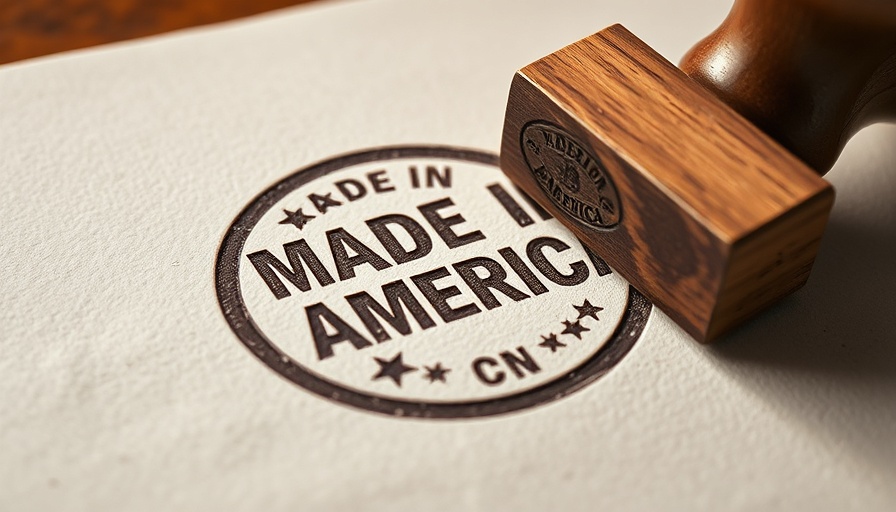
Decoding the “Made in USA” Label: More Than Just a Mark
When browsing through products, you've likely come across the “Made in USA” label, often evoking a sense of pride and quality assurance. But what does it really mean? The Federal Trade Commission (FTC) offers a clarity: for a product to earn this label, 'all or virtually all' of its components must be made and processed in the United States. This seemingly straightforward definition can be more nuanced, revealing complexities that shoppers should understand.
The Fine Print: Understanding “Virtually All”
The term “virtually all” is often subjective, depending on how the FTC evaluates a product's manufacturing costs and its foreign components. For instance, New Balance's made-in-America collection boasts a 70% domestic value. Yet, there’s no fixed percentage required to display the label, leading to potential misunderstandings. As a consumer, recognizing this gray area is essential in making informed purchasing decisions.
“Made in USA” vs. “Assembled in USA”: What's the Difference?
Another aspect that can confuse buyers is the difference between “Made in USA” and “Assembled in USA.” While the former suggests that all stages of production occur within the U.S., the latter signifies that significant processing happened abroad, with only the final assembly taking place domestically. Whitney Surane, founder of Madly Wish, emphasizes this, noting that consumers might mistakenly think similar implications apply to both labels, which can lead to disillusionment when the truth comes to light.
The Cost Factor: Why “Made in USA” Often Costs More
One common assumption about American-made products is that they come with a higher price tag. This perception holds true, primarily due to the higher labor costs associated with U.S. manufacturing compared to overseas production. If the average consumer aims to support American manufacturing, this increased cost is something to keep in mind while shopping.
Are “Made in USA” Claims Misleading?
While some brands genuinely commit to domestic production, others may market their products as 'Made in USA' with a touch of ambiguity. Such claims can verge on misleading, leading shoppers to believe products are entirely U.S.-made when they might not be. Transparency from manufacturers is critical, as it builds trust and ensures that consumers are not misled into associating higher prices with purely domestic production.
The Emotional Connection: Supporting American Jobs
Purchasing a product labeled “Made in USA” does more than just signify its origin; it plays a part in supporting local economies and American jobs. For many shoppers, this label evokes an emotional response, as they wish to contribute to their communities and help build a robust domestic market. Understanding this connection can add value to one's purchasing decisions, transforming shopping from mere consumption into a conscious act of reinforcement for American labor.
Final Thoughts: Take Charge of Your Purchases
As consumers, we hold the power to shape the market with our choices. By educating ourselves about what “Made in USA” truly represents, we can support companies committed to ethical manufacturing practices and American jobs. Next time you shop, take a moment to consider the implications of these labels; your choices truly matter.
 Add Row
Add Row  Add Element
Add Element 


 Add Row
Add Row  Add
Add 

Write A Comment